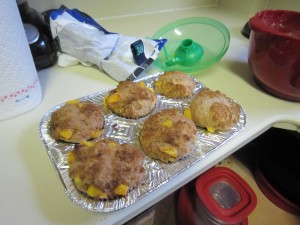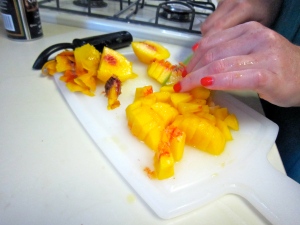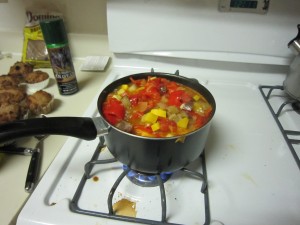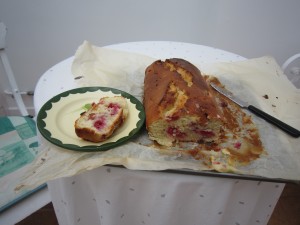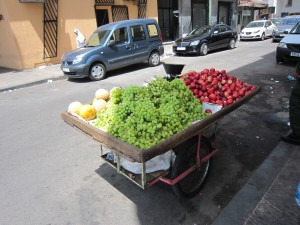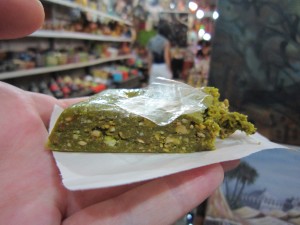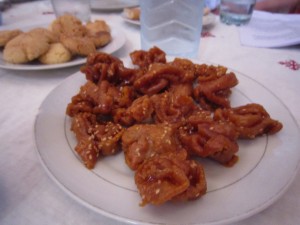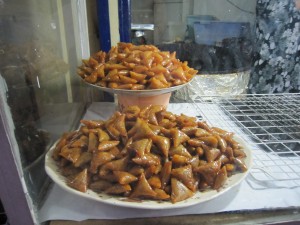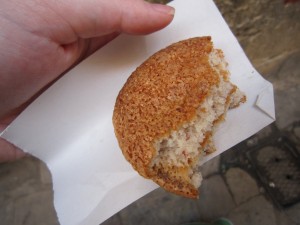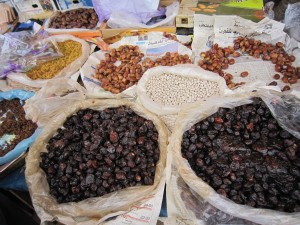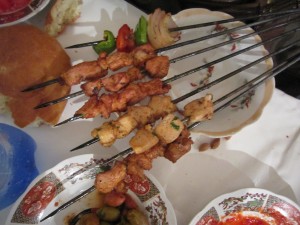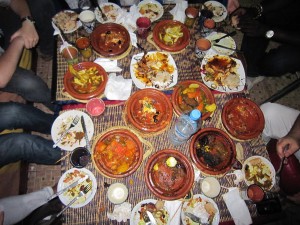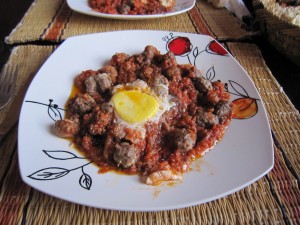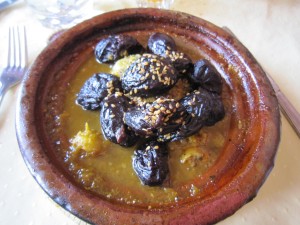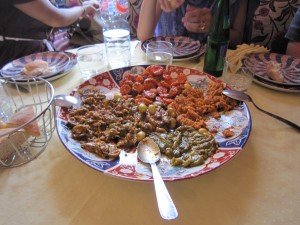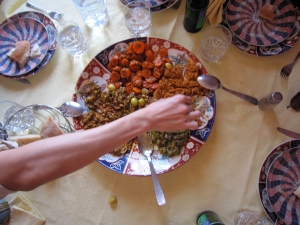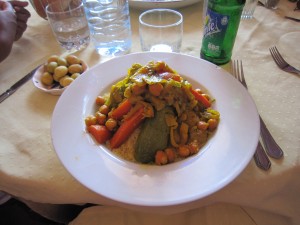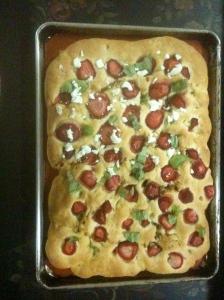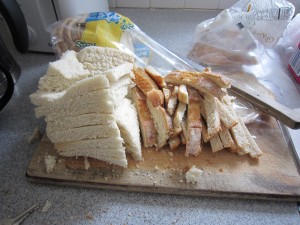So school has started up again for both of us, and all of a sudden I can’t just spend hours cooking something cause it might make a delicious dinner. I don’t have a meal plan this year, so I have to think ahead and go on grocery trips and make sure I have leftovers to bring to work. Phew. Most of the stuff I’ve been cooking hasn’t been too exciting, but I’m going to post some links below to the kind of recipes I depend on– generally meatless, pretty much one-pot meals that make enough for six even though I’m only feeding one. Getting through the leftovers is a challenge I’m usually up to.
But in more exciting news, my house this year is throwing weekly brunches, which means I do get to do a little baking for fun (without the guilt that I will have to eat everything I make). I’ve been making these awesome muffins with apples for a while, whenever I want something around to snack on/have for an unhealthy breakfast. I made them with peaches this time, but I think I might prefer the apples cause they hold their texture better– or maybe I just didn’t have enough peaches. Whichever way you try them, don’t skimp on the brown sugar on top– it makes an awesome crust.
Linkage:
Alice Waters’ Ratatouille— Take advantage of summer vegetables while they last! Delicious on cous cous with a fried egg on top.
Lentils and Rice– On my meal plan for this week, a cheap and complete meal.
Baba Ghanoush– Not technically a meal, but that is the beauty of only feeding yourself.
Baked oatmeal– I just made this for breakfast tomorrow. Hopefully a good way to prepare oatmeal ahead of time (without buying gross instant stuff).
Brown Sugar Peach Muffins (adapted from King Arthur Flour/Smitten Kitchen)
Equipment: 2 Bowls, hand mixer or wooden spoon, muffin tin
Ingredients:
1 cup (4 oz) whole wheat flour
1 cup (4 1/4 oz) All-purpose flour
1 tsp baking powder
1 tsp baking soda
1/4 tsp salt
1 tbsp cinnamon
1/2 cup (1 stick, 4 oz) unsalted butter, room temperature
1/2 cup (3 1/2 oz) granulated sugar
1/2 cup dark brown sugar, packed, divided
1 large egg
1 cup (8 oz) buttermilk or plain yogurt
2 large peaches or apples
Method: Preheat the oven to 450F. Grease and flour, or line with muffin liners, a 12-18 cup muffin tin (yield varies depending on how much fruit there is/how much you fill the cups).
Peel the fruit and chop coarsely. Mix together the flours, baking soda, baking powder, salt, and cinnamon, and set aside. In a separate bowl, cream the butter with a hand mixer or a spoon and some elbow grease. Add the granulated sugar and only 1/4 cup of the brown sugar, and cream until fluffy. Lightly beat the egg, and add it to the sugar/butter mixture. Mix well, and then gently stir in the yogurt or buttermilk; over stirring may cause the mixture to curdle if using buttermilk. Stir in the dry ingredients and then fold in the fruit.
Divide the batter among the muffin tins; you can fill them almost all the way. Sprinkle the remaining 1/4 cup brown sugar on top of the muffins, and bake for 10 minutes. Turn the heat down to 400F, and bake for an additional 5-10 minutes, until a tester comes out clean. Cool the muffins for five minutes in the tin, and then remove them to cool completely. Try not to only eat the tops.
